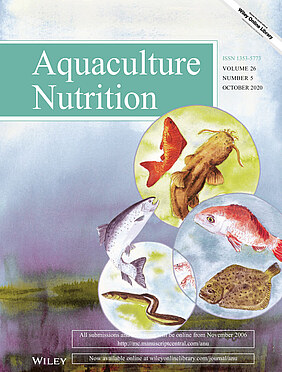Abstract
Protein hydrolysate is an essential component of dry starter diets for fish larvae, as promoting healthy development. Peptides are also suitable substrates for many intestinal microbes. Five experimental diets were compared to a control diet (CONT) supplemented with a commercial fish protein hydrolysate. Each diet contained one marine protein hydrolysate, which differed by the proportion of di- and tri-peptides, and by raw materials. Two diets (HYD4 and HYD5) stimulated larval growth compared with CONT. Two other diets (HYD1 and HYD2) yielded inferior growth. HYD1 was detrimental for survival, which was associated with an up-regulation of genes involved in inflammation and antioxidative responses, while the gene coding for osteocalcin was down-regulated in this group. The relative activity of enzymes in the brush border membrane of enterocytes was significantly stimulated with diets HYD3 and HYD4. Gut microbiota were influenced by the diet, but the bacterial community profiles observed with HYD3 and HYD4 were the only ones that were not significantly dissimilar. Groups HYD1 and HYD2 showed the most dissimilar microbiota. It was concluded that the nature of the marine protein hydrolysate is important for larval development and health, but a high proportion of small peptides is not a sufficient criterion to assess dietary value.

